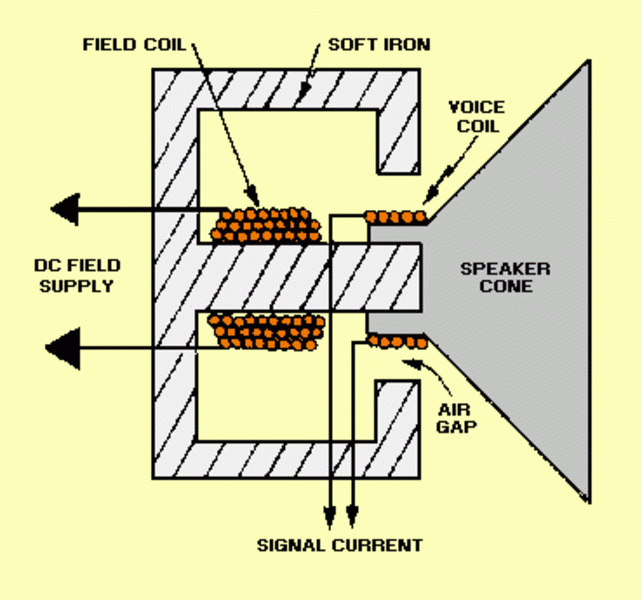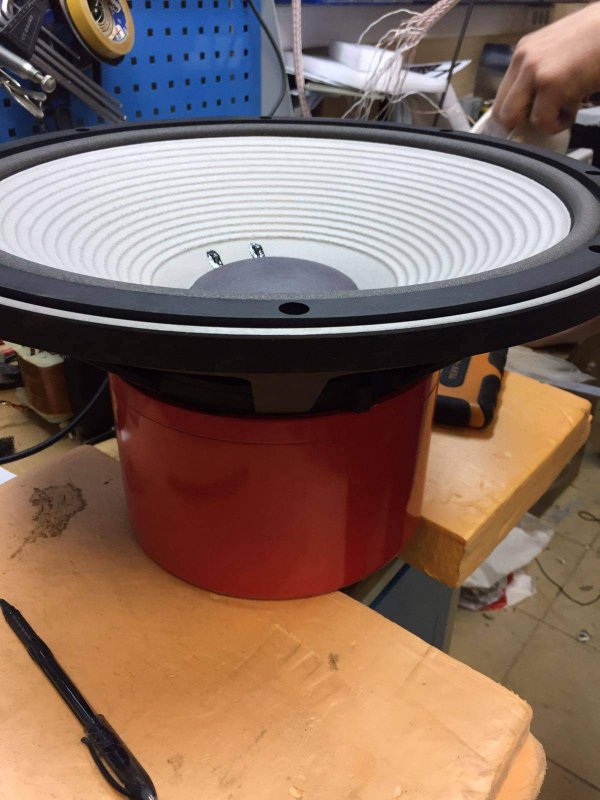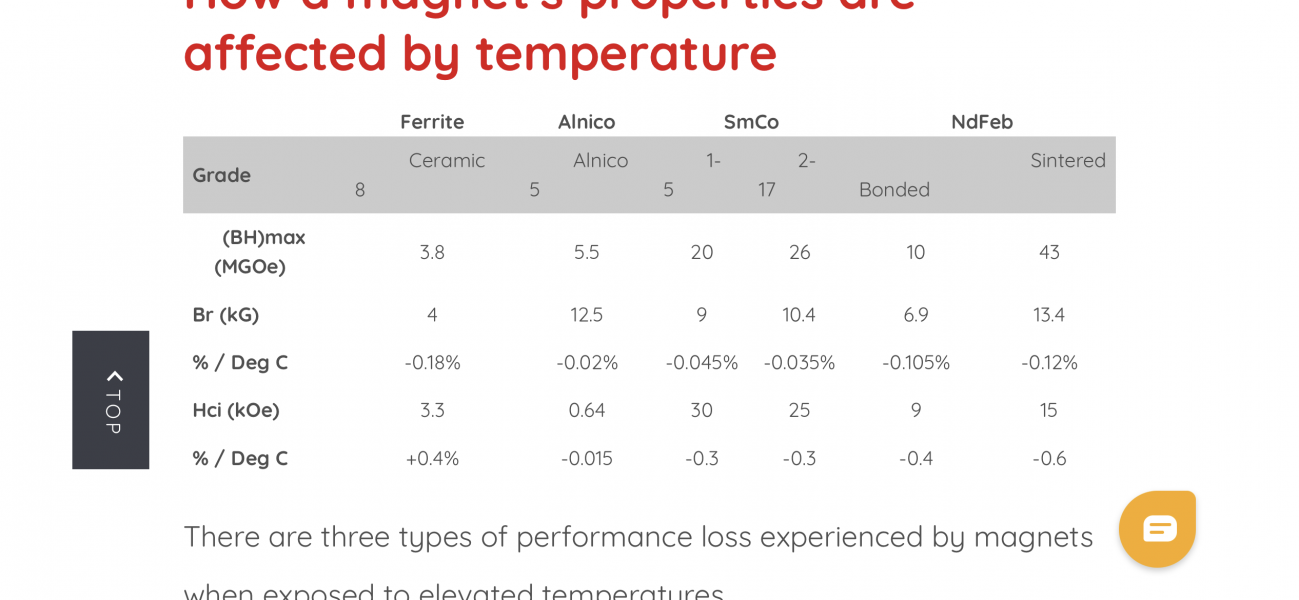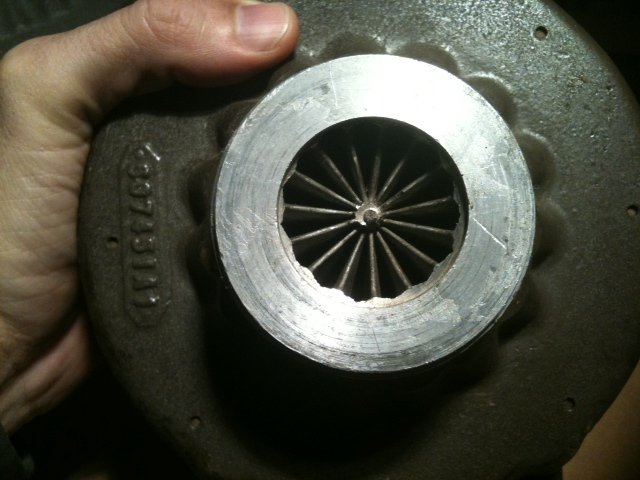Field Coils for Audio Systems
- Thread starter Audiophile Bill
- Start date
You are using an out of date browser. It may not display this or other websites correctly.
You should upgrade or use an alternative browser.
You should upgrade or use an alternative browser.
FYI. If you study bass drivers en masse, you’ll quickly discover there is no free lunch. Look at fs and sensitivity data. You quickly discover that if you want very low fs, you can’t concomitantly have high sensitivity (except for rare instances). The huge diameter pro woofers of 21” have decentish fs around 30hz and high sensitivity but if you are looking at high sensitivity (98-100dB) 15” as a breed, most will have fs around 40-45hz.
Agreed, you also have to factor in cone stiffness and Xmax, those high sensitivity drivers will have light cones and low Xmax, so you have to use more of them of suffer from a lack of accuracy and more distortion due to the flexible cone at higher SPLs.
I've tested the exact same 15" woofer with several different paper cones, and ended up preferring the woofer with the stiffest cone, but then also upsized the motor and VC diameter to compensate. It ended up being the most expensive configuration too of course.
I read this elsewhere: that adding more low end will improve the upper end sound quality, or at least our perception of it.
For sure, if you roll off the highs and lows simultaneously it will sound ok or at least not obviously unbalanced... but if you have full extension at one end it will highlight a lack of extension at the other end. So adding full range bass can either enhance the highs and make everything better or it'll make it more obvious if you have lack of high end extension.
Bose figured this out decades ago...
Hi - you say "the field coil (fed with appropriate power supply) magnetic field will be incredibly stiff and not fluctuating with increased heat like fixed ferrite magnets" - how is this measured or determined? How is mag field "stiffness" measured??Hi,
A field coil doesn’t give more efficiency per se. A modern production neodymium magnet can easily provide enough flux density to saturate any metal poles including permendur without issue. Same goes for other magnets such as alnico. The theoretical maximum flux density achievable is 2.4T and numerous drivers have done this for many, many years with fixed magnets - Lowther PM4a would be an example.
The performance benefits largely reside in the incredible ability to tune the driver to the speaker by altering the magnet flux and consequent t/s parameters. Simplifying it a bit with an example of a field coil 8” full ranger - as you increase the voltage/current the magnetic force increases which leads to increased sensitivity and lower q. This results in a driver suitable mainly for horn loading applications but will also result in lower bass output. The same driver being fed a lower voltage/current will be less sensitive but its q will be higher meaning it will lend itself much more readily to open baffle application since the driver cone will be more readily able to move. This will give more bass output but at expense of sensitivity.
There are other arguments related to the field itself - that is the field coil (fed with appropriate power supply) magnetic field will be incredibly stiff and not fluctuating with increased heat like fixed ferrite magnets.
Then there is the area which is very hard to quantify relating to the sound itself. I have spent most of my time recently together with my Viking partner in crime (Leif) trying to extract the maximum from our field coil carts. People would tell us we lost the plot when we tell you that the type of capacitor used on the last filtration drastically alters the sound. Even though it is just a cap filtering dc for the magnetic field of the cartridge. If you read widely, there are all manners of opinion on which power supply types to use for best sound. Purists seem to opt for Tungar bulb type supplies, others on battery, other using various medical supplies and then there is the constant voltage and current crowd. I recently spoke to someone who said never to use constant voltage or current as it fights with the voicecoil.
Best regards.
Hi - you say "the field coil (fed with appropriate power supply) magnetic field will be incredibly stiff and not fluctuating with increased heat like fixed ferrite magnets" - how is this measured or determined? How is mag field "stiffness" measured??
Measure a suitable ferrite magnet you might have at room temperature. Heat up said ferrite magnet and measure the flux with a Gaussmeter and watch the field strength deteriorate as temperature rises.
with respect, i'm more interested in field "stiffness" and "fluctuating" (not a steady rise in heat). Many folk mention the ability of field coils (especially current regulated as some say) to resist the effects of the fluctuating voice coil field. "Field stiffness" is often quoted, and it's this phenomenon i'm trying to understand - how is it measured? e.g....FC field stiffness 3000, neodym 50, ferrite 10, mentioned recently (!)...Measure a suitable ferrite magnet you might have at room temperature. Heat up said ferrite magnet and measure the flux with a Gaussmeter and watch the field strength deteriorate as temperature rises.
with respect, i'm more interested in field "stiffness" and "fluctuating" (not a steady rise in heat). Many folk mention the ability of field coils (especially current regulated as some say) to resist the effects of the fluctuating voice coil field. "Field stiffness" is often quoted, and it's this phenomenon i'm trying to understand - how is it measured? e.g....FC field stiffness 3000, neodym 50, ferrite 10, mentioned recently (!)...
Although this phenomenon is often talked about, I have never heard of it being measured.
They say that field coils have the potential to resist any sagging of magnetic flux, then of the permanent magnets Alnico has the stiffest field, Ferrite poorer and Neo the poorest.
It also makes sense intuitively, and certainly holds up to listening tests (ie, when A-B testing the same driver with a permanent magnet vs field coil). The only reason magnets largely replaced coils is cost and convenience.
Hi and thanks for your input, i"m reading all 17 ? pages, carefully. I see the words "stiff" and "sag" several places. It's clear that some have the same idea, though I've yet to see it spelled out. Without embarrassing anyone, your neo and ferrite results are reversed elsewhere (by 5:1, just saying)... and from your "Alnico has the stiffest", are we to infer that "alnico suffers the least sag in its magnetic flux"? To avoid doubt, do we agree that sag means degradation - diminution - even instantaneous/realtime, of flux density in the gap of the field coil due to the interaction with the voice coil's own magnetic field fluctuation (due in turn to the audio signal)? I read a patent recently, where this signal-related diminution is to be countered by modulating the field-coil current! (could even be adjusted to expand the dynamics, and add other mind-bending profiles.) That said, how is sag measured? If only by ear, one runs the risk of attributing differences to sag and not to some other (later, obvious) factor. FWIW my friend simply anchored the VC (in the gap) then modulated the signal through it to allow him to measure FC flux modulation using a Hall sensor (graciously in the public domain: Facebook/"Kanzen Field Coil Loudspeakers" 4 Aug 2019). Gap size and Teslas were not massively different from many permanent magnet designs. Whilst this is not itself a comparison with PMs, one could be done. FC flux modulation was easily measured, with what i believe was a Lab-type regulated PS both OFF & ON - it is/was certainly not immune, oscillating by around 2% (0.02T peak-peak, 100Hz, no shorting ring, VC ~ 15V pk-pk; slightly less when PS was ON and pole pieces saturated, i.e. perhaps NOT so much PS-dependent?). So it's all relative - and high time to get more than a Freudian handle on Stiffness. Would PMs be hopelessly worse? - in ratios like 3000 : 50 : 10 :: FC : neo : ferrite ??! (but to call these numbers permeability is rather ridiculous - if people are offering explanations, let's all be very clear, please). Any comments or observations on similar tests MOST WELCOME - many thanks in advance.Although this phenomenon is often talked about, I have never heard of it being measured.
They say that field coils have the potential to resist any sagging of magnetic flux, then of the permanent magnets Alnico has the stiffest field, Ferrite poorer and Neo the poorest.
Certainly the latter which I explained already. Here are some data I found online on this:was the main difference between FC and perm magnets not the hysteresis, and indeed the magnitude of the effect of heating on magnetic field?
Attachments
That would mean that high efficiency speakers are a.o. better because they pump less power into the magnets?
Well in a pro PA environment where you have a shit load of watts powering big 15-18” woofers, voice coils will defo get very hot. Indeed there are lots of PA systems that have specific measures to counter this including water cooling. How much it is an issue at home, I don’t know cos don’t have data. But yes an efficient transducer (horn) will have less chance of the voicecoil heating all things being equal.
The maximum possible magnetic force is only slowed down by the thermal balance of the FC coil.was the main difference between FC and perm magnets not the hysteresis, and indeed the magnitude of the effect of heating on magnetic field?
You can only "set the power supply so high" that after several hours of operation the FC coil temperature does not exceed approx. 60 degrees. Statement from an old hand who is familiar with it. if it gets warmer you lose sensitivity 4 -7db.
For example, if the coil is heated too much, the bass will become boomier. Higher impedance voice coil. the filter network (xover) also no longer fits.
hold an infrared thermometer on the dustcap during operation after hours mostly it works fine.

P.S
It should be noted here that (particularly during the heating-up phase) the voice coil will change its mechanical properties (and thus also the sound) due to thermal radiation.
However, a permanent magnet does not have this "disadvantage".
I found a paper once that demonstrated more than 3dB drop even from short bursts heating the VC. The heat ramps up very quickly with power input but cools down relatively slowly due to limited air flow in the gap. Forced cooling will help both in the initial heating and recovery.The maximum possible magnetic force is only slowed down by the thermal balance of the FC coil.
You can only "set the power supply so high" that after several hours of operation the FC coil temperature does not exceed approx. 60 degrees. Statement from an old hand who is familiar with it. if it gets warmer you lose sensitivity 4 -7db.
For example, if the coil is heated too much, the bass will become boomier. Higher impedance voice coil. the filter network (xover) also no longer fits.
hold an infrared thermometer on the dustcap during operation after hours mostly it works fine.View attachment 97773
P.S
It should be noted here that (particularly during the heating-up phase) the voice coil will change its mechanical properties (and thus also the sound) due to thermal radiation.
However, a permanent magnet does not have this "disadvantage".
I think it depends a lot on the construction of the coil and enclosure. On my RCA1443, an infrared thermometer has never shown more than ~35C, even after 12 hours of use.The maximum possible magnetic force is only slowed down by the thermal balance of the FC coil.
You can only "set the power supply so high" that after several hours of operation the FC coil temperature does not exceed approx. 60 degrees. Statement from an old hand who is familiar with it. if it gets warmer you lose sensitivity 4 -7db.
For example, if the coil is heated too much, the bass will become boomier. Higher impedance voice coil. the filter network (xover) also no longer fits.
hold an infrared thermometer on the dustcap during operation after hours mostly it works fine.View attachment 97773
P.S
It should be noted here that (particularly during the heating-up phase) the voice coil will change its mechanical properties (and thus also the sound) due to thermal radiation.
However, a permanent magnet does not have this "disadvantage".
But then the driver weighs about 30lbs. It’s built like a tank!
Attachments
Similar threads
- Replies
- 4
- Views
- 1K
- Replies
- 1
- Views
- 870
- Replies
- 37
- Views
- 5K
- Replies
- 12
- Views
- 4K
- Replies
- 18
- Views
- 2K
| Steve Williams Site Founder | Site Owner | Administrator | Ron Resnick Site Owner | Administrator | Julian (The Fixer) Website Build | Marketing Managersing |










